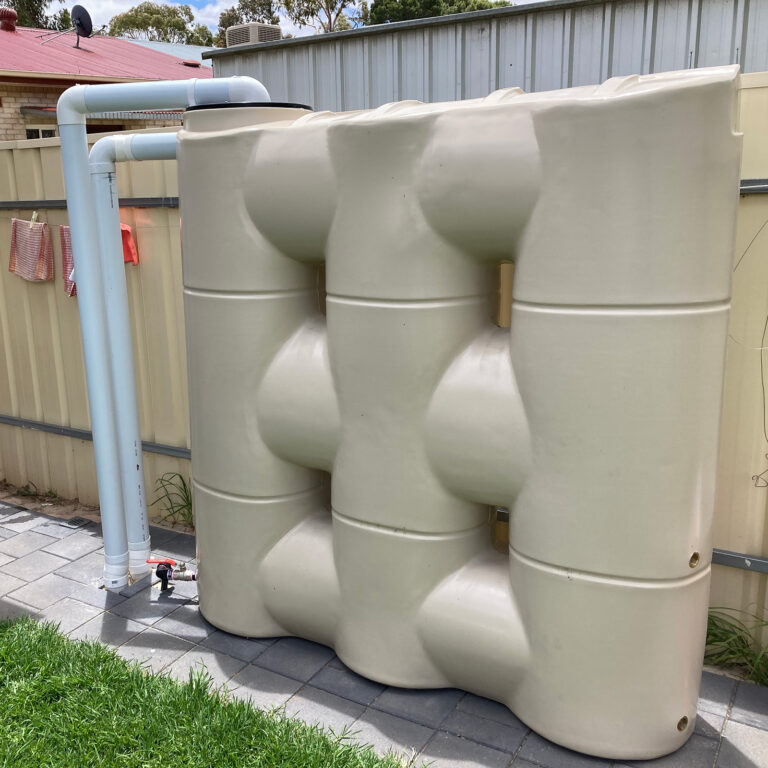Slimline Water Tanks: The Perfect Choice for Urban Water Storage
Understanding the Significance of Rain Tanks in Drought-Prone Regions for Water Security
In areas at risk to extended dry spells, the function of rainwater tanks in boosting water safety is a subject of growing importance. As neighborhoods face the challenges of water deficiency, recognizing the significance of these containers exceeds plain collection of rain. Rain tanks function as a crucial tool in reducing the effect of water shortages by supplying a lasting resource of water for various requirements. The true value of rainwater containers expands much past simple storage; it encompasses resilience-building procedures and the promo of long-term water preservation strategies. This multifaceted strategy to water protection warrants a more detailed assessment of the role rainwater storage tanks play in making certain a dependable supply of water throughout times of dry spell.
Advantages of Rain Containers
Utilizing rainwater containers provides a lasting solution for enhancing water and enhancing water safety and security in domestic and commercial settings. One of the main benefits of rainwater containers is their ability to minimize dependence on keys water. By capturing and storing rain that drops on rooftops, this alternate resource can be used for different non-potable objectives such as irrigation, purging commodes, and cleaning garments. This not only saves cured alcohol consumption water but likewise decreases water bills for users.

Rainwater Harvesting Techniques
Rain harvesting strategies include a series of techniques developed to successfully gather and store rain for numerous objectives, adding to water preservation and sustainability. One typical method is the installment of roof catchment systems, where rainwater is accumulated from the roofing of a building and guided to a tank. This approach is fairly simple and cost-effective. One more preferred technique is using above-ground or underground storage space containers to store rain for later use. These storage tanks come in various sizes and materials to suit different needs and can be connected to the existing plumbing system for very easy access.

In addition, rain gardens and absorptive pavements are innovative methods that entail landscaping or paving surfaces in such a way that permits rainwater to percolate right into the ground, restoring groundwater books. Additionally, shape farming and terracing are agricultural techniques that assist catch rainwater and avoid soil disintegration in hilly surface. By executing these look at this now diverse rainwater harvesting strategies, areas can improve water safety and durability in drought-prone regions while advertising lasting water administration methods.
Relevance of Water Safety And Security
Making certain reputable accessibility to clean and sufficient water sources is critical for maintaining human health and wellness, financial growth, and ecological health. Water security is a crucial element of social resilience, especially in areas at risk to droughts and water shortage. Ample water security includes different dimensions, including schedule, top quality, and availability of water for domestic, farming, industrial, and ecological needs.
Water protection plays an important duty in promoting public wellness by decreasing the occurrence of waterborne illness and making sure hygiene centers. Economically, water protection is vital for farming productivity, commercial operations, and overall economic growth. Slimline water tanks. Water security is carefully linked to ecological sustainability, as it supports ecological communities, biodiversity, and general ecological balance.
In drought-prone regions, water safety becomes much more essential as a result of the heightened risk of water lacks. Carrying out approaches like rainwater harvesting, water recycling, and efficient water management techniques can substantially enhance water safety in these locations. By prioritizing water protection, communities can better hold up against the effects of climate adjustment, population growth, and other obstacles that threaten water accessibility.
Enhancing Water Resilience
With boosting worldwide water obstacles, developing resilience in water systems has actually come to webpage be a crucial focus for sustainable advancement efforts. Enhancing water durability entails executing approaches to guarantee water schedule and high quality in the face of transforming ecological problems, such as droughts, floods, and air pollution.
One secret facet of improving water strength is advertising the use of rain containers in drought-prone regions - Slimline water tanks. Rain containers function as an efficient ways of catching and keeping rainwater for later use, decreasing reliance on scarce freshwater resources throughout dry durations. By including rain harvesting systems right into water monitoring strategies, neighborhoods can improve their capability to stand up to water shortage and preserve water safety and security

Lasting Water Conservation
In the middle of intensifying water obstacles, the sensible management of water resources through lasting conservation techniques is necessary for guaranteeing lasting ecological security and social health. Lasting water preservation requires the efficient use water resources to meet current requirements without compromising the capability of future generations to meet their own needs. By executing techniques such as rainwater harvesting, greywater recycling, and water-efficient innovations, areas can reduce water wastage and relieve stress on freshwater resources.
In addition, lasting water preservation practices add to ecosystem health by maintaining appropriate water degrees in rivers, lakes, and wetlands, sustaining biodiversity, and protecting all-natural habitats. These methods additionally play a crucial duty in mitigating the effects of environment adjustment by assisting to adapt to transforming precipitation patterns and water availability.

Final Thought
To conclude, rain storage tanks play a critical duty in boosting water protection and strength in drought-prone regions. By utilizing rain harvesting strategies, neighborhoods can decrease their reliance on typical water resources and promote lasting water conservation techniques. This not only helps minimize the effects of water scarcity throughout dry spells however additionally adds to long-lasting water safety and security and strength in the face of environment modification challenges.